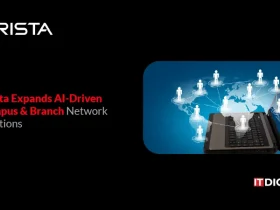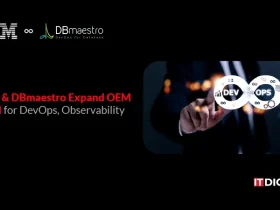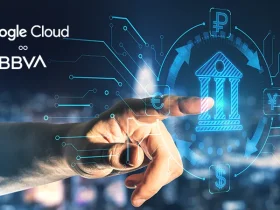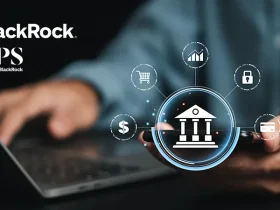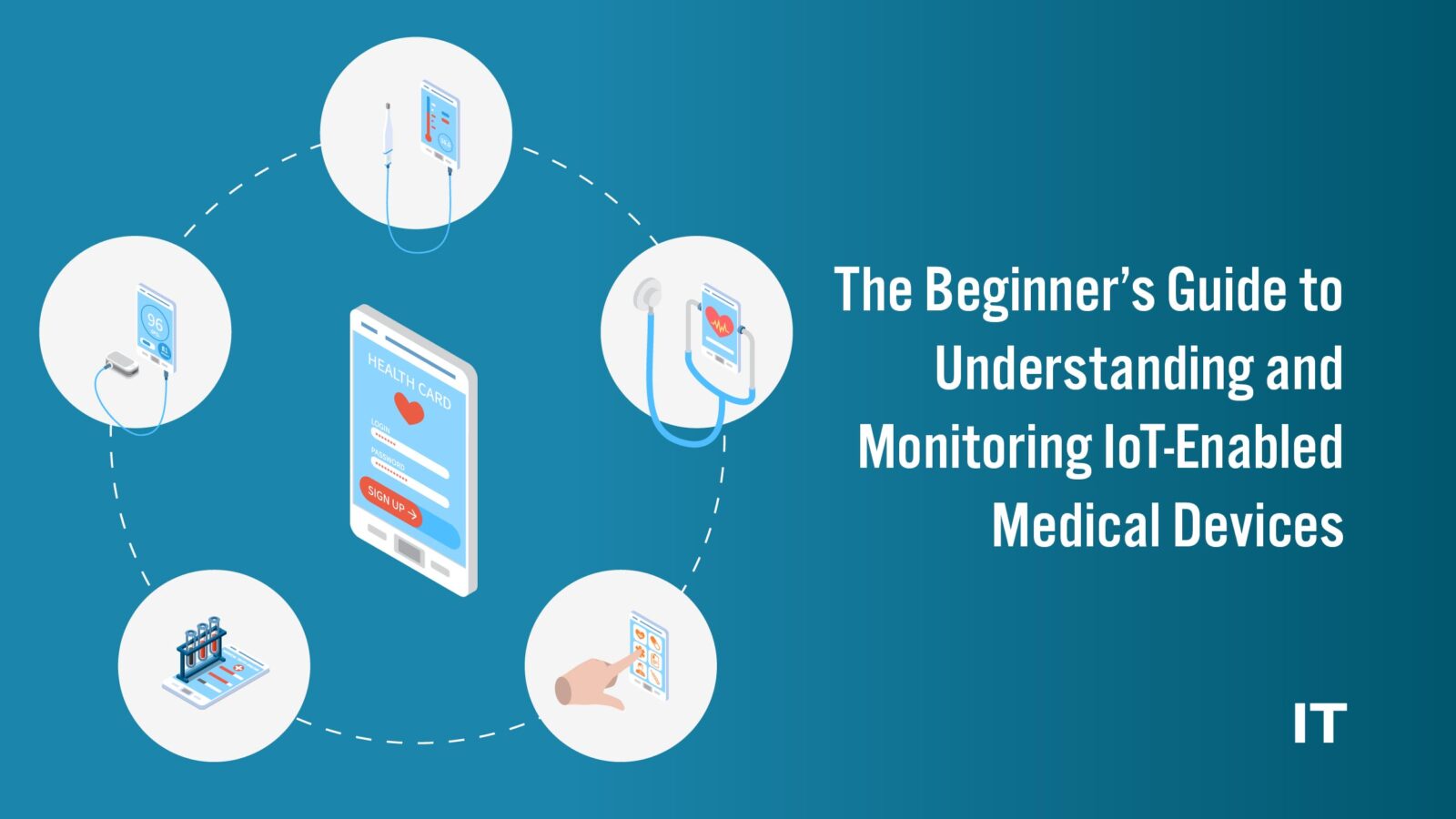The Internet of Medical Things (IoMT), or connected healthcare devices, is rapidly growing within the IoT market, projected to hit $176 billion by 2026.
Understanding the various uses of IoMT devices is essential for effectively monitoring, managing, and safeguarding them in healthcare. While remote patient monitoring, like tracking heart rate and body temperature, is a common example, there are numerous other applications of IoT in healthcare. This brings us to the topic – IoT-enabled medical devices
Let’s jump in and understand everything about it.
What are the IoT Based Medical Devices?
IoT-based medical devices are revolutionizing healthcare delivery and improving patient outcomes through innovative technologies. Here are some examples:
- Remote Patient Monitoring (RPM) Systems: These systems allow healthcare providers to monitor patients’ vital signs and overall health remotely, enabling proactive healthcare management.
- Smart Wearable Devices: Devices like smartwatches and fitness trackers provide real-time health data, promoting proactive health management and wellness.
- Telemedicine Devices and Platforms: IoT enables virtual consultations and remote diagnosis, enhancing access to healthcare services, especially in remote areas.
- Smart Medication Dispensing Systems: These systems help patients manage medication schedules and track adherence, improving medication management.
- IoT-enabled Medical Imaging Devices: Advanced imaging devices with IoT integration allow for real-time data transmission and improved diagnostic accuracy.
- IoT-enabled Surgical and Monitoring Equipment: IoT technology enhances surgical precision and patient safety by enabling real-time data capture and analysis during procedures.
- IoT-enabled Health Information Systems: Interconnected systems facilitate seamless data exchange and secure access to patient health records, improving overall healthcare efficiency.
These IoT-based medical devices are transforming healthcare delivery and enhancing the efficiency of healthcare systems.
5 Ways IoT-Enabled Medical Devices are Transforming Healthcare
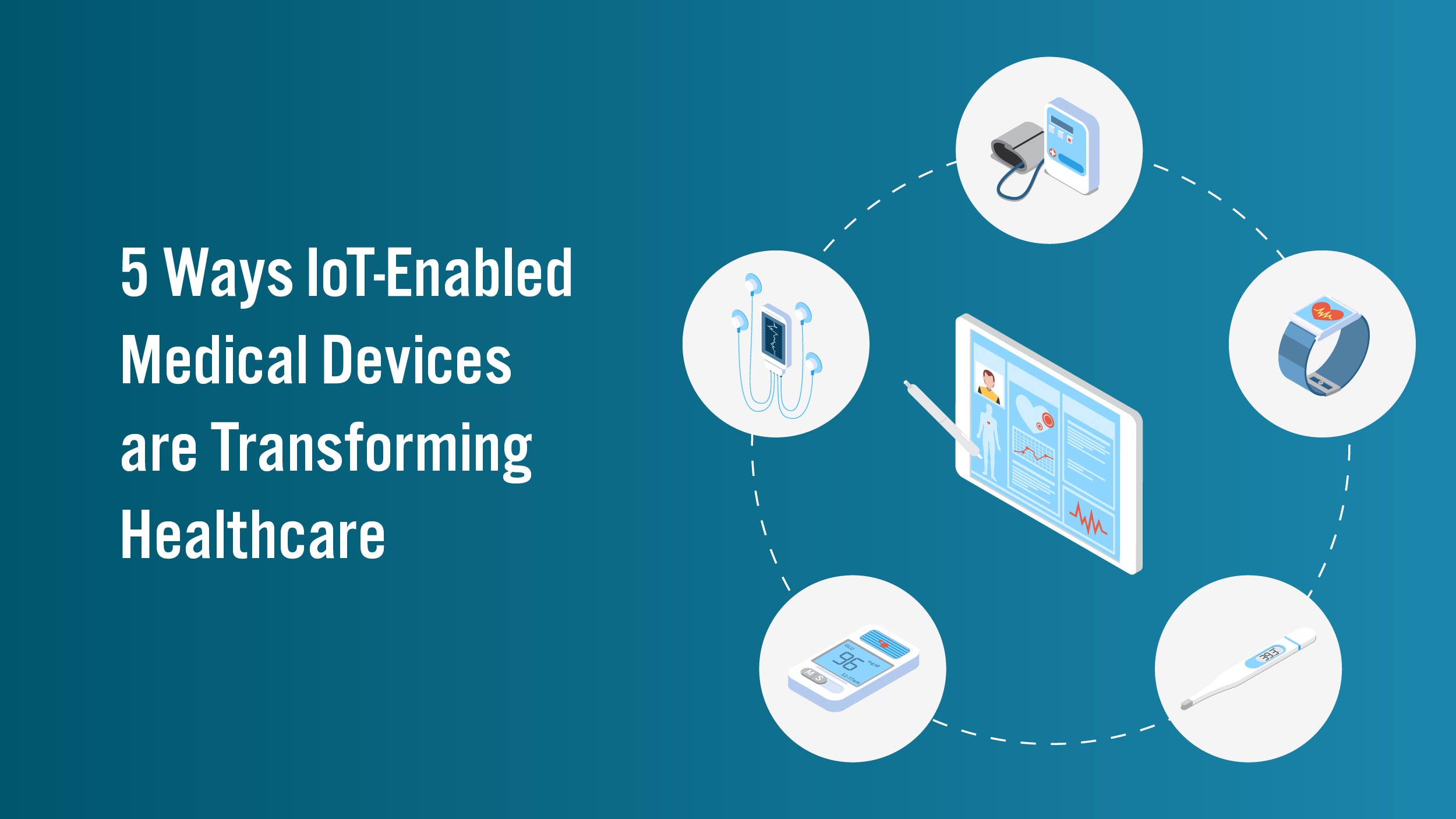 Below are the top five ways how IoT-enabled medical devices are revolutionizing the healthcare industry for the better.
Below are the top five ways how IoT-enabled medical devices are revolutionizing the healthcare industry for the better.
Also Read: The Beginner’s Guide to Understanding and Implementing Healthcare Data Security Measures
Heart-rate Monitoring
Traditional heart-rate monitoring methods, typically performed periodically, often miss rapid fluctuations and restrict patient mobility due to the need for wired machines. However, modern IoT devices offer continuous monitoring without the constraints of wires, allowing patients to move freely. Despite advancements, ensuring ultra-accurate results with IoT devices remains a challenge, although most devices boast accuracy rates of around 90% or better.
Hand Hygiene Monitoring
Historically, maintaining proper hand hygiene in healthcare facilities has been challenging. IoT devices now play a crucial role in reminding individuals to sanitize their hands upon entering hospital rooms, providing tailored instructions based on specific risks. While these devices cannot physically sanitize hands, research indicates that they can significantly reduce infection rates by over 60%.
Depression and Mood Monitoring
Continuously collecting data on depression symptoms and mood has traditionally been difficult. IoT-enabled medical devices equipped with mood-aware capabilities leverage various data points, such as heart rate and blood pressure, to infer patients’ mental states. Some advanced devices can even track eye movement. While these devices offer valuable insights, they are not yet able to predict depression symptoms or other concerns with complete accuracy.
Parkinson’s Disease Monitoring
Effective treatment of Parkinson’s disease requires understanding how symptoms fluctuate throughout the day. IoT sensors address this challenge by continuously monitoring symptoms, allowing patients to remain in their homes rather than undergoing extended hospital stays. This continuous monitoring enables healthcare providers to gather crucial data for optimizing treatment plans.
Glucose Monitoring
Traditionally, monitoring glucose levels has posed challenges for the over 30 million Americans living with diabetes. Manual checks and recording of results are inconvenient, providing only a snapshot of glucose levels at the time of testing. This approach may miss significant fluctuations, leading to potential problems being overlooked.
IoT-enabled medical devices offer a solution by enabling continuous and automatic monitoring of glucose levels. These devices eliminate the need for manual record-keeping and can alert patients to problematic glucose levels in real time.
Challenges in developing IoT glucose monitoring devices include ensuring they are compact enough for continuous monitoring without causing discomfort to patients and minimizing energy consumption to avoid frequent recharging. While these challenges exist, addressing them has the potential to revolutionize glucose monitoring for patients.
IoT-Enabled Medical Devices Healthcare Companies and Startups
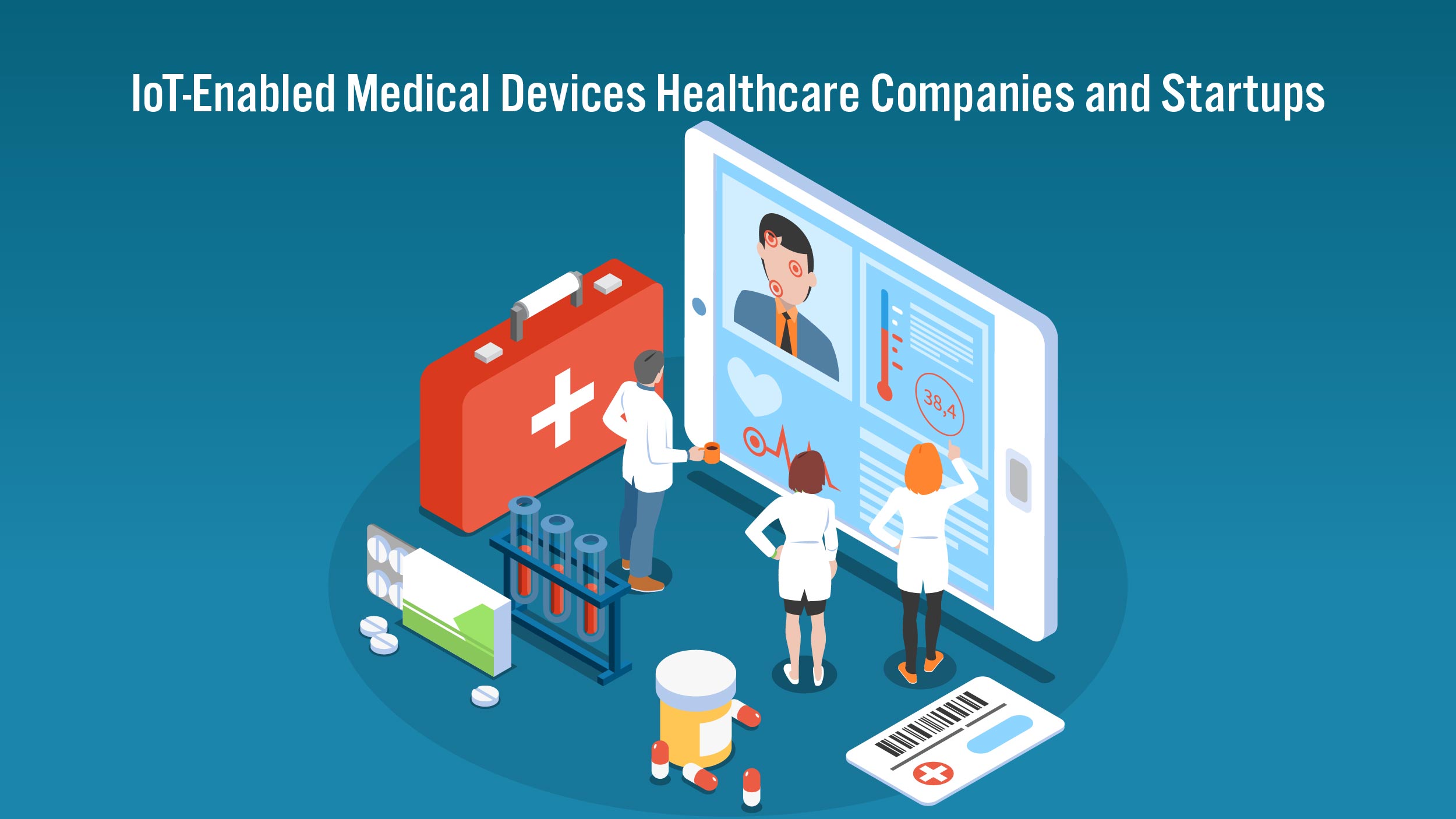 In the rapidly evolving IoT-enabled medical devices, several prominent companies are emerging as frontrunners, vying for a substantial share of the market. These companies are strategically positioning themselves by developing tailored products for specific medical applications, fostering collaborative research and development initiatives, and actively seeking out new startups to augment their offerings.
In the rapidly evolving IoT-enabled medical devices, several prominent companies are emerging as frontrunners, vying for a substantial share of the market. These companies are strategically positioning themselves by developing tailored products for specific medical applications, fostering collaborative research and development initiatives, and actively seeking out new startups to augment their offerings.
Microsoft, for instance, has leveraged its Microsoft Azure cloud platform to enable the seamless delivery of diverse healthcare services through the cloud. Similarly, Apple has made significant strides in transforming its consumer products into versatile health hubs.
With each iteration, the Apple Watch continues to expand its array of health features. Notable advancements include the incorporation of an FDA-approved electrocardiogram (EKG) in Series 4, as well as the introduction of menstrual health tracking and a dedicated Research app in Series 5.
Final Takeaway
IoT-enabled medical devices represent a transformative force in healthcare, offering innovative solutions for remote patient monitoring, personalized care, and real-time data-driven decision-making. These devices have the potential to revolutionize healthcare delivery, improve patient outcomes, and enhance the overall efficiency of healthcare systems, marking a significant step towards a more connected and proactive approach to healthcare.








